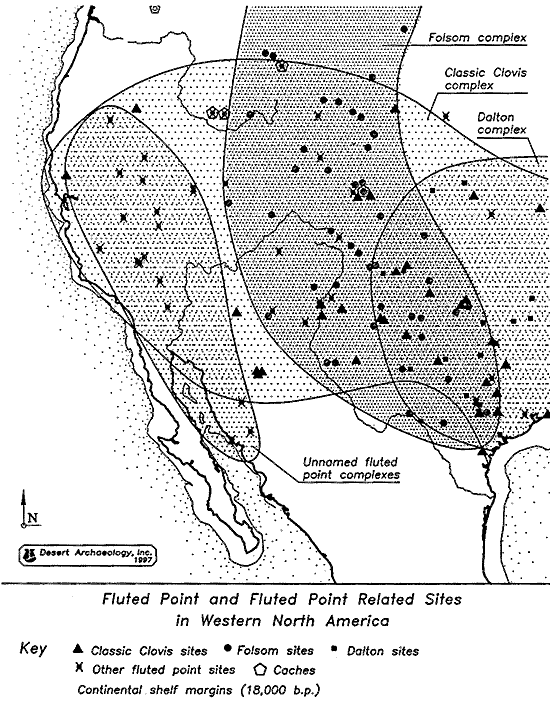Michael K. Faught, Florida State University
From Faught, Michael K., and Andrea K. L. Freeman. 1998. Paleoindian Complexes of the Terminal Wisconsin and Early Holocene. In Paleoindian and Archaic Sites in Arizona, by J. B. Mabry, pp. 33–52. Arizona State Historic Preservation Office, Phoenix.

Currently, the earliest unequivocal sites of human occupation in North America have fluted flaked stone projectile points, often in association with the bones of extinct megafauna (mammals larger than about 90 pounds). Dated to between about 11,600 and 10,200 radiocarbon years b.p. (uncalibrated) in North America, fluted point sites are widely distributed throughout the New World, and are associated with a wide variety of paleoenvironments and diverse artifact assemblages.
There are several varieties of fluted points in western North America, where the distributions of the Clovis, Folsom, and Dalton points overlap in the Southern Plains. Many of the fluted points found in the Great Basin, California, and northwestern Sonora have V-shaped, concave bases and are generally smaller, narrower, and less regular in shape than other types of fluted points; these may represent another, currently unnamed fluted point variety.